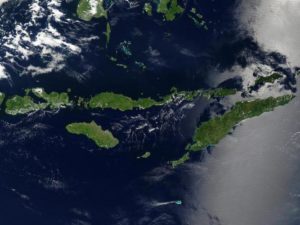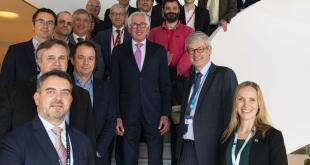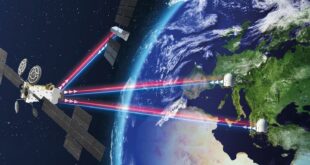
Indonesia’s Ministry of Communication and Information Technology (Kominfo) has launched the tender for its Multifunctional Satellite Project at the Creative & Innovative Financing Forum held in Bali, Indonesia, according to a report in SpaceTech Asia.
Kominfo also announced that the winners of the satellite tender will be announced at the end of this year.
Indonesia’s Multifunctional Satellite Project – one of the world’s largest national single-satellite projects to date – sets out a requirement for the launch of a High Throughput Satellite (HTS) with a capacity of at least 150 Gigabytes-per-second (GBPS) that must be operational by 2022. The satellite is to provide connectivity to at least 150,000 nodes throughout Indonesia’s approximately 6,000 inhabited islands. The project budget is estimated to be at least U.S.$420 million.
The Multifunctional Satellite Project will require collaboration between the Indonesian government, local satellite operators, and foreign companies who will each provide component pieces of the entire system, including the satellite’s manufacture, operations, and securing an orbital slot.
Indonesia’s Minister of Communication and IT, Rudiantara, said the private-public sector partnership will be based on the government’s KPBU initiative, which focuses on the development of national insfrastructure.
“Telkom, Indosat, PSN and other operators have never used such a technology, demonstrating that the government is able to show greater progress than the private sector. The project will be carried out using the KPBU scheme of public-private sector cooperation,” Rudiantara said.
The Multifunctional Satellite Project will provide satellite broadband Internet to schools, community clinics, and government offices throughout Indonesia.
“Currently, Indonesia has 226,000 schools, but more than 9,000 do not have Internet connectivity. Of the 4,000 public clinics, most remain unconnected. The same goes for the 50,000 or so village-level government offices,” Rudiantara added.
Rudiantara stated that satellite connectivity is Indonesia’s only option when compared to the cost of laying sufficient fiber optic cabling, saying, “We don’t have a choice. Using terrestrial solutions, we’ll be pulling cables for a long time. This is why we’ve chosen to launch a satellite.”
The tender process for the satellite has already begun, with telcos, satellite operators, and manufacturers submitting their bids in July and August 2018. An earlier project presentation held in December 2017 was attended by companies such as Arianespace, Thales, the China Great Wall Industry Corporation (CGWIC), SES, and China Satcom among other local and foreign companies.





